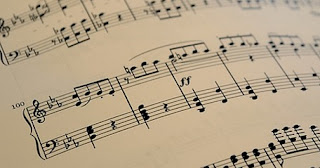Disclosure / Disclaimer: I received this post, free of charge, from Skoove, for blog posting purposes. No compensation, monetary or in kind, has been received or implied for this post. Nor was I told how to post about it, all opinions are my own.

Summer is HERE!

Summer is HERE!
Got the "I'm boreds" yet?
LOL, I KNOW you do! Check out this post, and you may have a great option for some
FUN Summer learning!
 |
| Courtesy of Skoove |
A piano has always been an instrument that has inspired people and, naturally, many want to master the skill of playing it. In the past, it could be quite difficult to achieve that because pianos have always been a bit pricey. Now, with the internet we can learn all about our favorite instruments, even learning how to play them without leaving the house!
 |
| Courtesy of Skoove |
First of all, a piano didn’t always look like it does today. Its ancestor “hammered dulcimers” comes from the Middle Ages Europe. It was also a string instrument, but it didn’t have a keyboard. This problem was solved with the invention of the clavichord and harpsichord. It was a great step forward, but the volume still couldn’t be controlled. Finally, around the year of 1700, Bartolomeo Cristofori invented the piano we know today. However, that wasn’t the end of the piano’s evolution, you can still find it in all shapes and sizes: from the standard one with 88 keys to the imperial (102 keys) and toy piano (44 or 49 keys).
 |
| Courtesy of Skoove |
Another thing you can’t avoid when talking about pianos are the keys. The keys are probably the first thing that comes to your mind when you hear the word piano! So, as a start, every piano has two types of keys: white keys (naturals) and black keys (accidentals). No matter the size, C is always the first note on the piano keyboard. The notes (white keys) are grouped into octaves and the initial octave then consists of the following notes: C, D, E, F, G, A, B, C. The black keys are also named after the first seven letters of the alphabet, but they can be sharps (#) or flats (b). You play sharps when you go to the right (higher notes), and a flat when you go to the left (lower notes).
 |
| Courtesy of Skoove |
In addition to the keys, pianos also have pedals. Most commonly, there are two pedals: the una corda and the sustain pedal. However, some models also have the third pedal: the sostenuto pedal. The una corda pedal is found on the far left and, naturally, the left foot is used to operate it. Its function is to make the sound softer. The sostenuto pedal can be found in the middle, but like it was previously mentioned, it is often not there at all. The pianist activates it with their right foot. It is used to sustain some notes. The third and final pedal is located on the right and it is activated with the right foot. It makes the note resonate while it is pressed.
Another important thing when it comes to a piano is tuning because no piano will sound good unless it’s tuned properly. You can choose whether you’d like to do it yourself or to call a professional (they usually charge about $150/h). If the professional tuning sounds too expensive, you can do it yourself, but you’ll need some equipment.
 |
| Courtesy of Skoove |
Here are the most basic tools you’ll need: a piano tuning lever (to adjust the pins connected to the strings of each key), an electronic chromatic tuner (it will tell you how the notes should sound) and mutes (to mute the strings you are not working on). Apart from that, you’ll need a very quiet room and a lot of patience. Each key has three strings connected to it, and you’ll need to tune each of them separately. In a nutshell, you play the key and turn the lever until the electronic chromatic tuner tells you it sounds right. But, arm yourself with a lot of patience (and nerves) because it is not as simple as it sounds.
And finally, it is time for playing a piano. First, you’ll have to learn how to read the notes. First, you’ll notice two lines with notes the upper one is a treble clef (played with the right hand), and the one below is the bass clef (played with the left hand). Then you'll work on hand placement, and learning to move from note to note, and learning chords.
The above would be the elementary knowledgebase when it comes to playing the
piano. Of course, this skill takes more than reading a couple of articles, but in the
end, the effort is worthwhile. So, choose your favorite song, sit at the piano and
practice until you make it! Skoove is a great piano learning platform for those of
you on the go.



Comments
Post a Comment